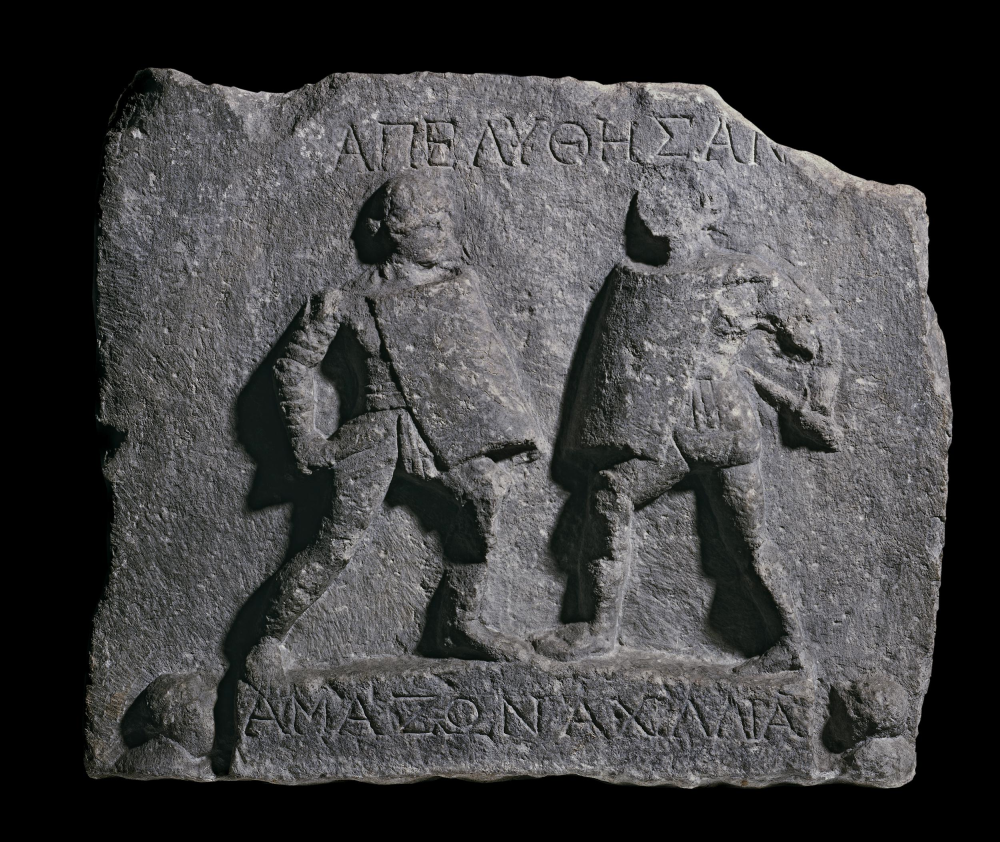In the British Museum sits an ancient marble relief that depicts two gladiators battling with swords and shields. It’s a familiar scene from ancient Rome bar one intriguing detail: both of the gladiators are female.
The inscription about the marble relief, which was found in Halicarnassus, Turkey, reads that both gladiators fought to an honorable draw. So was this work of art a one-off, or were female gladiators in ancient Rome commonplace?
Female gladiators in ancient Rome: The evidence
Trying to understand cultures from which we are so far removed always sees scientists stumble upon a myriad of familiar obstacles. We’re burdened with the expectations of modern life, and so struggle to interpret evidence through anything other than the lens of today’s status quo. However, when it comes to female gladiators, there is some intriguing evidence to work from.
The marble relief mentioned above is perhaps one of the clearest depictions of female gladiators in ancient Rome. A ~2,000-year-old bronze statue is also believed to depict a female gladiator, but that wasn’t the original interpretation of the artifact.
Now housed at the Museum für Kunst und Gewerbe Hamburg, the small statue was traditionally considered to represent a female athlete holding a strigil – an instrument with a curved blade used to clean the skin by scraping off dirt and sweat. However, in a 2011 paper, Alfonso Manas of the University of Granada suggests this statue actually depicts a female gladiator, “more specifically a thraex, a gladiatorial type that fought with a short-curved dagger, a weapon that to the untrained eye can be confused with a strigil.”
According to Manas, 10 literary fragments and one epigraphic inscription are all we have in the way of written evidence that speaks of female gladiators, so you can see why it’s a tricky picture to piece together.

A marble relief at the British Museum depicting two female gladiators without helmets.
The role of female gladiators
While we celebrate the Gladiators on TV today, the social standing of gladiators in ancient Rome was quite different. To fight or perform in an arena for the entertainment of the masses was considered a lowly position, so you can imagine the shame thrust upon any woman who wanted to enter the ring. As put best by the Roman satirist Juvenal:
“What sense of shame can be found in a woman wearing a helmet, who shuns femininity and loves brute force….If an auction is held of your wife’s effects, how proud you will be of her belt and arm-pads and plumes, and her half-length left-leg shin-guard! Or, if instead, she prefers a different form of combat [as a Thraex, both of whose legs were protected], how pleased you’ll be when the girl of your heart sells off her greaves!….Hear her grunt while she practises thrusts as shown by the trainer, wilting under the weight of the helmet.”
While female gladiators were rare compared to their male counterparts, they did exist and were cut from all kinds of cloth, from the lowly to the high-born. As for why they felt compelled to battle when such an activity was received with criticism, it seems – as Lady Gaga put it – they may have lived for the applause.
“Women who chose a life in the arena – and it does seem this was a choice – may have been motivated by a desire for independence, a chance at fame, and financial rewards including remission of debt,” explained Content Director of World History Encyclopedia Joshua Mark. “Although it seems a woman gave up any claim to respectability as soon as she entered the arena, there is some evidence to suggest that female gladiators were honored as highly as their male counterparts.”
The mission continues to piece together the no-doubt rich history of ancient Rome’s female warriors from the scant evidence we have available to us, and while we wait to find some more, we’ll always have that Pepsi advert.
Source Link: Were There Female Gladiators In Ancient Rome?